Vasu Raja has been giving interviews after being let go as American Airlines Chief Commercial Officer. American’s financial results have been poor, and at some level either he needed to go, or the CEO did. It’s not surprising which decision got made.
American’s performance wasn’t helped by de-emphasizing managed corporate travel and travel agencies, strategies most associated with Raja, but blaming underperformance on those aspects of the business is also wrong. Raja’s network strategy has focused on the Sun Belt, but that is the hand he was dealt with. Prior decisions at the airline to walk away from Los Angeles, Chicago, and New York hamstring him.
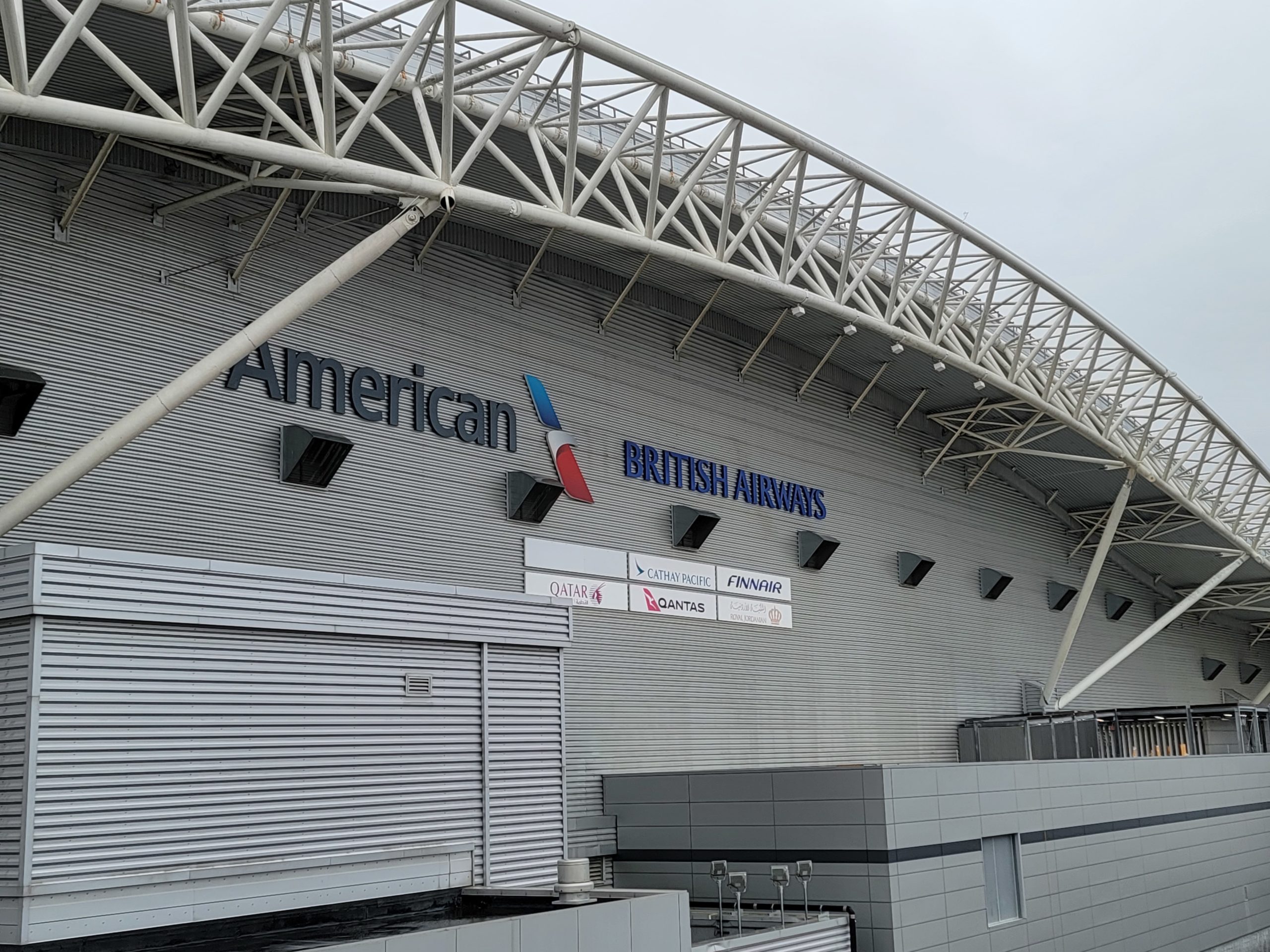
He’s still being paid through January and that constrains what he can say, but he does have an interesting perspective and he shared it with Brian Sumers, for the excellent subscription Airline Observer newsletter which is a must-read. I love this first quote about Raja as disruptor,
“I would say the exact same thing [as current United Airlines CEO Scott Kirby]: I was fired from American Airlines and I was better off for it,” Raja said. “A long time ago, he and I had this conversation about how when you bring a lot of innovation and new ideas to these big established companies like the airlines, typically your last day doesn’t end with cake in the break room and a happy hour after work.”
Raja’s War On Travel Agents
Vasu Raja isn’t wrong that much of the technology used in airline sales is antiquated, and that many of the seats airlines discount for managed travel programs could be sold directly to other customers at higher fares.
However airlines don’t sell all seats that way, and travel agencies do represent many customers even if those agents aren’t selling high margin ancillary products like assignments. Raja slashed sales staff and managed deals and imposed penalties on agencies that wouldn’t switch to not quite ready for primetime technology. He thought they’d make the switch, and American would generate more revenue at lower cost in any case. That didn’t quite happen but it’s only part of the story.
Raja defends the longer-run objective, and he’s likely correct, but he doesn’t appear to own the mistake of going too far too fast and with sticks and not folding in carrots (though he at least acknowledges the possibility that it did not go well):
“If there were tools for agencies to go and sell different services and products to you and to me that the airlines really valued, suddenly travel agencies would have to compete at a level that they arguably don’t have to do, when everyone’s effectively selling the exact same product,” he said. “When you endeavor to go and drive that kind of change, regardless of how well, or not, it has gone, it’s not going to be met with thunderous applause.”
How Much Does Onboard Product Matter?
Vasu Raja’s focus has been on moving to direct distribution of tickets and self-serve tools for customers, selling short haul flights in the Sun Belt, and monetizing the AAdvantage program.
He’s long described the network as being the product – they sell flights that get people from one place to another, and their product is creating connections. Now he says, sure, that doesn’t mean you shouldn’t also have a good product.
If I fly one time a day between Los Angeles and New York, and you fly 20 times a day between Los Angeles and New York, I can do anything I would like with a product, but I’m still disadvantaged relative to you. But that doesn’t mean that I shouldn’t have a really, really good product.
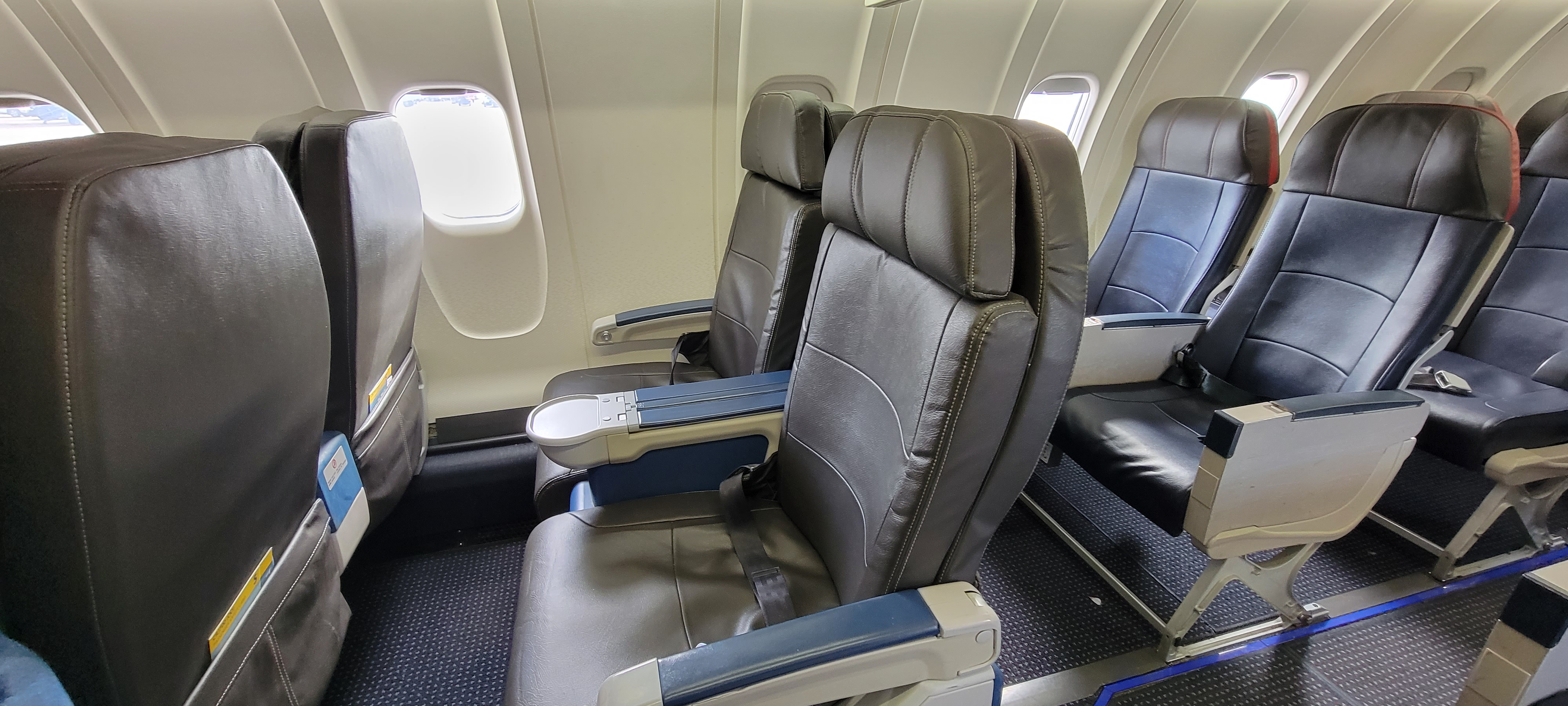
Raja also says that the product isn’t just the seat, it’s also “the selling experience (was it easy for a customer to book and change a ticket?) and the flight attendant service.” And he says “I very much believe in what I’ll call a really practical and elegant kind of product.” I hear those words as “basic.” Some might even say “mid.”
He did focus on the selling experience at American, but didn’t make positive progress during his tenure with the onboard product or service.
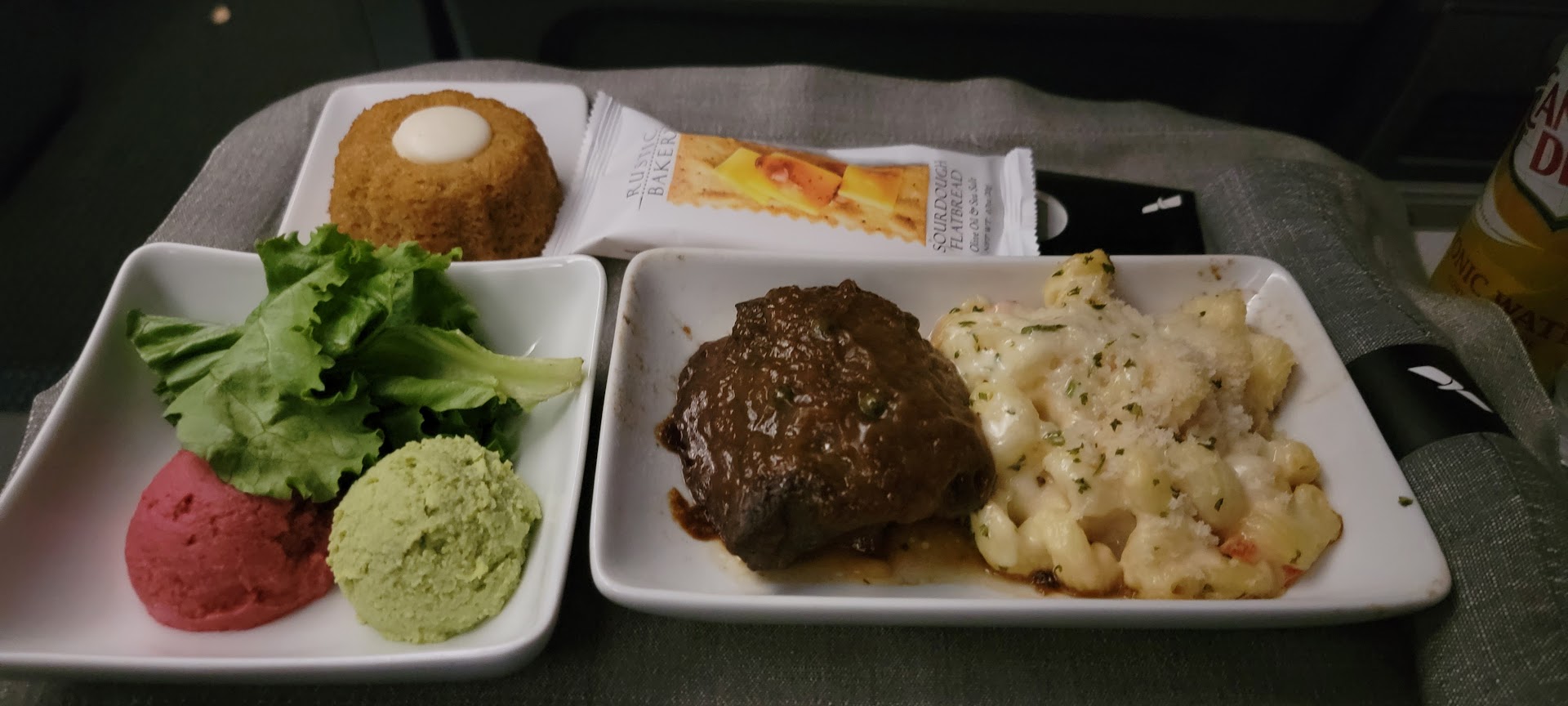
He Hates ‘Strategic’ Flying
A lot of airlines fly routes for reasons that aren’t obvious. Maybe they’re money-losers but they’re still sacrosanct.
Sumers gives examples of these reasons,
[A] corporate client wanted the route, or airline planners decided the network needed to include a major city, or executives feared that if they pulled the route, a competitor would jump in. More recently, airlines have added routes to boost credit card applications.
Criticizing ‘strategic’ flying is easy if you define it as money-losing and you do the accounting correctly. United Airlines pulled out of New York JFK, because they saw it losing money, but then learned that they lost Los Angeles corporate deals because nobody wanted to fly cross-country to Newark. If a route is necessary for a corporate deal, then the profitability of the whole deal needs to be considered and not just the one route in isolation.
Similarly, when Raja oversaw the dismantling of competitiveness in New York (before driving the JetBlue partnership, which would have solved for this had it been allowed to continue) he talked to me five years ago about the success of that strategy as having stopped the losses. But he was talking about the accounting wrong.
I told him at the time that ceding New York was ceding New York spending on co-brands and they needed to attribute this high margin revenue from their AAdvantage card deals to these routes. He started talking about that once the JetBlue partnership came into play and card signups in New York accelerated.
Was New York strategic flying in 2019 when Raja argued that the drawdown of flights improved their P&L? I suspect that they were simply ignoring the value of the card, when Raja was driving the network but didn’t have responsibility for the full P&L.
American Airlines Walked Away From Chicago, Los Angeles And New York
American has hubs in these three cities but they’re not the preferred carrier in any of them. They had an opportunity in the Bay Area with their Alaska Airlines partnership but haven’t capitalized on it. Their transatlantic gateway is Philadelphia, which has limited high yield local traffic. Charlotte is a poor man’s Atlanta.
The airline pulled its international flying from Chicago other than London, and became a clearer second to United. They eliminated their non-joint venture long haul flying from Los Angeles, planning a retreat to Seattle as Pacific gateway that never happened. New York is perhaps the greatest tragedy.
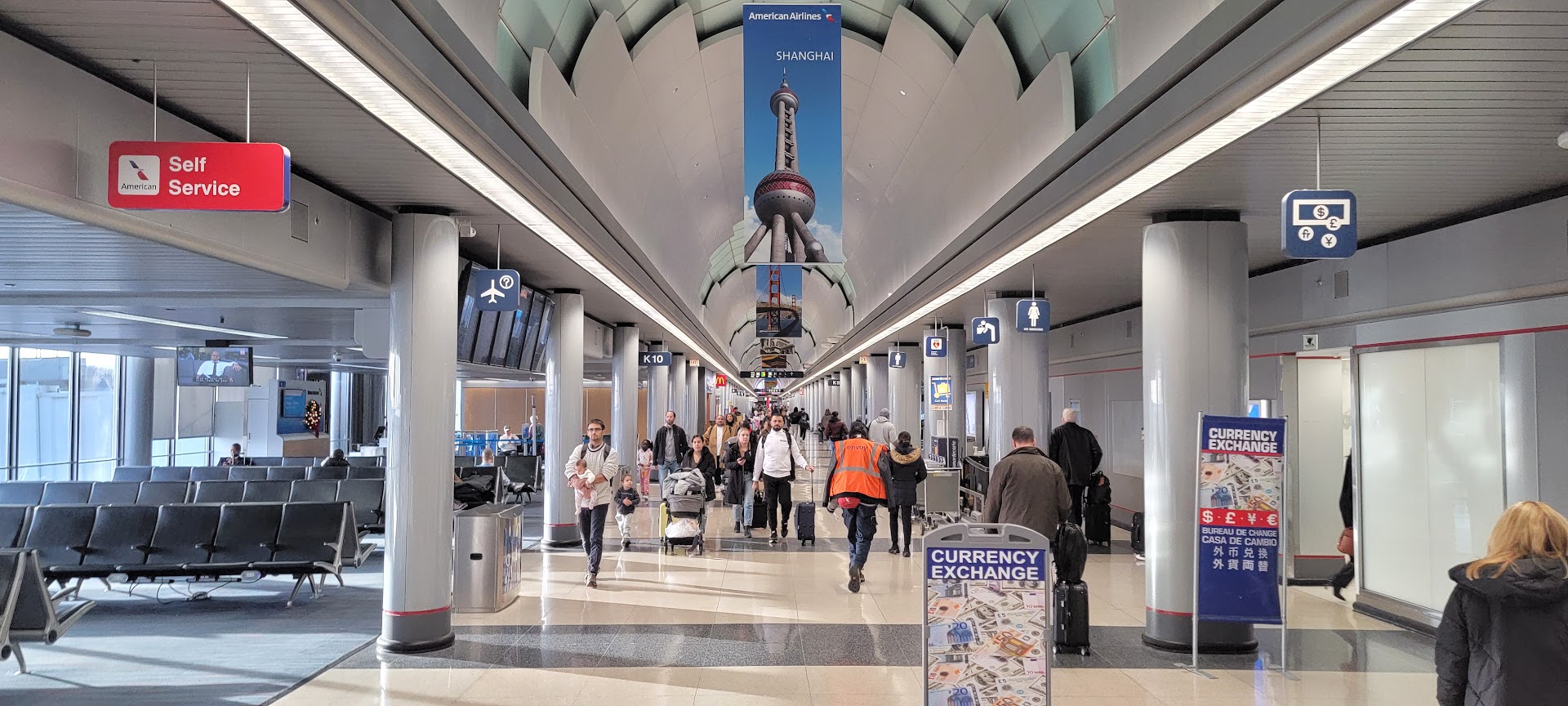
Apparently Raja “traces the New York shift back to December 2006 when Delta announced a new flight to Accra, advertising that it would be the only airline to fly to five continents from JFK.” That seems wrong – Delta’s ascendance in New York really began with the ill-advised slot swap US Airways did with Delta that was first proposed in 2009. US Airways leadership sold Delta is New York position.
Then, when US Airways management took over American, their strategy in 2014 shifted to no longer compete for the business of New Yorkers but to become the airline ‘that brought people to New York’ with scheduled optimized for flights into and back out of New York in the same day.
Raja acknowledges that New York is “a massive wealth center and wealth turns into travel.” He now realizes this and makes the Jeff Bezos point about one-way and two-way doors.
“What constitutes strategic flying?” Raja said. “Is strategic flying loss-making flying? Or is strategic flying something like: if I exit a market like San Francisco or Los Angeles or one of the big cities on the East Coast, what actually happens? That is risky, and then you’re making a one-way decision if you go and exit a market.”
How Much Do American Airlines Decisions During Raja’s Tenure Reflect His True Self?
As American Airlines removed premium seats from its Boeing 787-8s six years ago, Raja groused publicly to employees that he didn’t have enough premium seats to sell and that this was hurting them in Chicago.
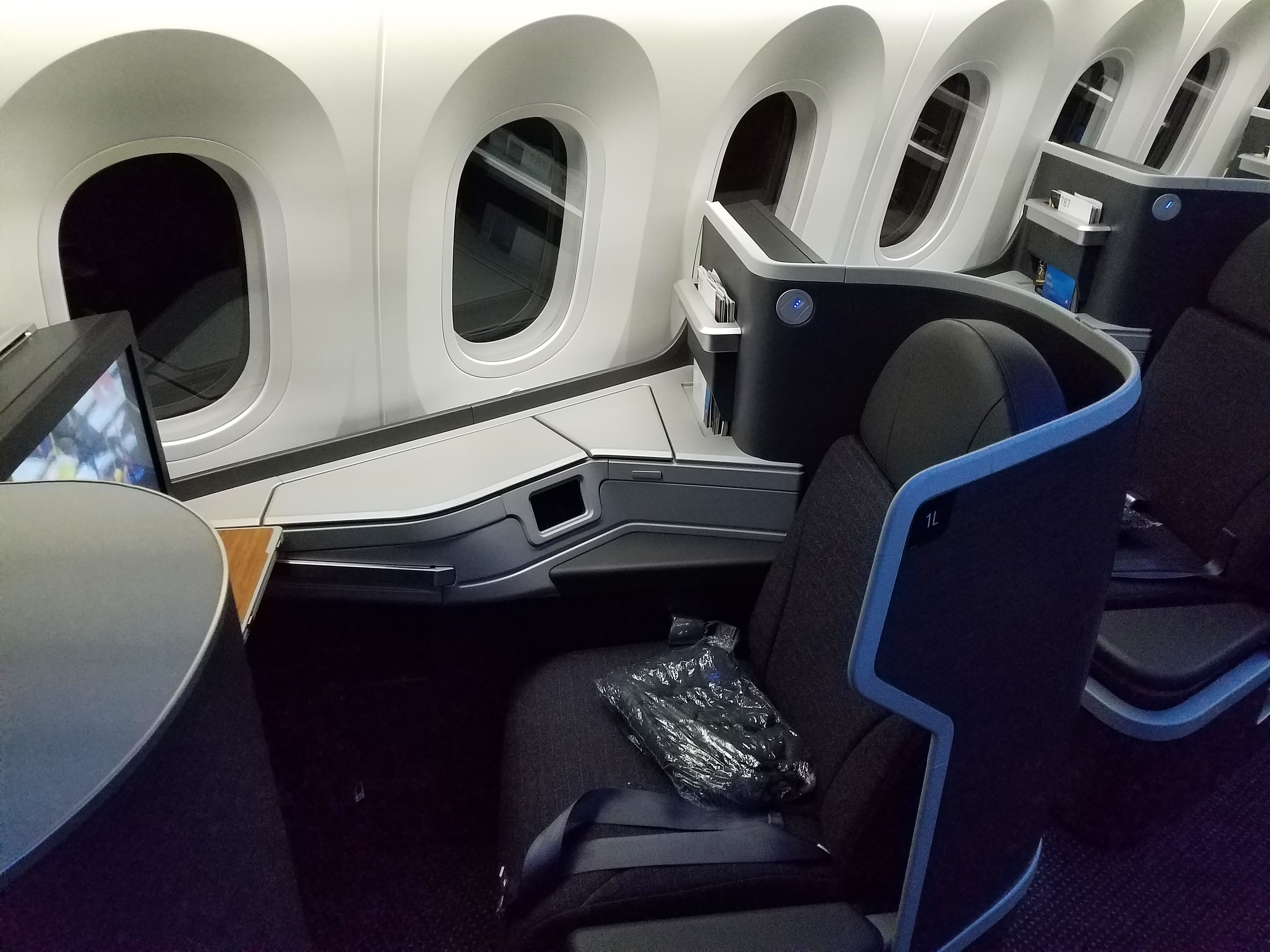
At the same time, you adopt your employer’s incentives if you want to succeed. When United Airlines became first to ‘permanently’ eliminated change and standby fees from fares other than basic economy, Kirby said he wanted to do this since 1998. But he spent years as an airline President and not CEO.
He now says that eliminating change fees has neutralized a major Southwest Airlines advantage (and United competes heavily with Southwest in Houston, Chicago, Denver and California). Where he was once the airline industry executive status quo, he says that status quo was wrong and led a shift away from it.
Kirby came up from America West, becoming Executive Vice President. That airline took over US Airways and he became its President. Then that carrier took over American Airlines where he served as President, before becoming United’s CEO. He acknowledged the contract in viewing service with history “at America West.” However he’s been “convinced by Delta that product and service mattered.” He’s seen them differentiate themselves to earn a revenue premium, and no longer just offer a commodity product.
While United’s economy seats remain paper-thin, he’s adding seat back entertainment screens and has even disavowed the decision at American to rip those out (he claims to have had nothing to do with it as President there).
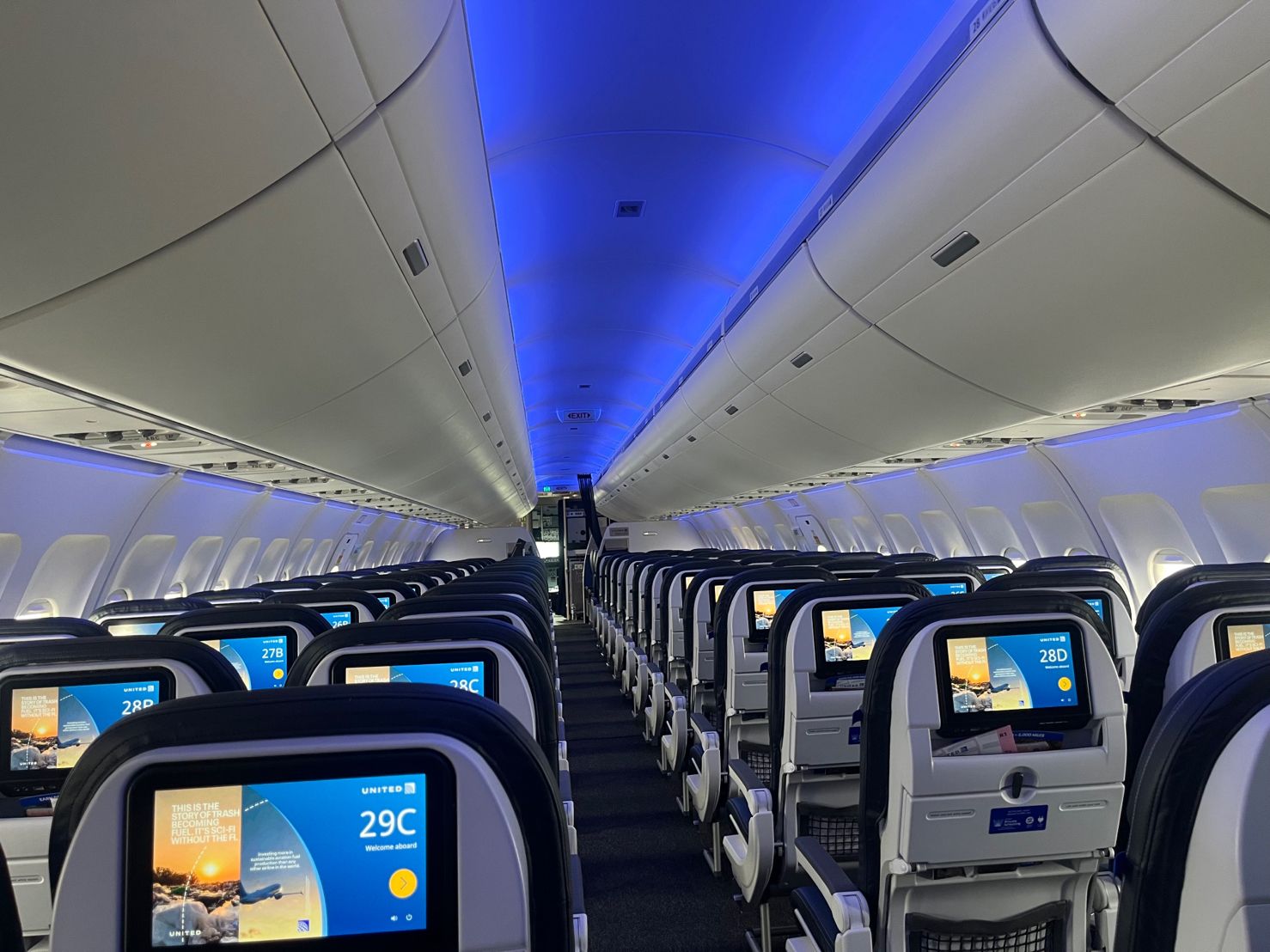
What does that mean about Raja? He’s clearly focused on the schedule as the product but it’s difficult to disentangle how much of that was simply what he had to work with and the incentives he faced? He came up over 20 years at American in fleet, network planning, and pricing not product so it’s also not surprising that his areas of deep expertise would be what he saw as most important.
I wouldn’t be surprised to see Raja in very senior airline roles in the future, and the opportunity here is to grow. He’s come across mostly as arrogant. He’s been the smartest guy in most rooms, and that can lead to a sense of infallibility. It’s useful when articulating a broad, sweeping vision about the world but less useful when needing to revise and improve that vision. His success going forward will come from understanding the role of product and service on top of just route network for anything other than an ultra-low cost carrier (and even there!).
For American Airlines, in particular, they need to earn a revenue premium over peers because they are a high cost airline and that’s not likely to change (even if they were to go through another bankruptcy). That requires more than just offering flights and even delivering on-time flights. Those are table stakes. Customers need to actually prefer you over competitors and be willing to spend more to get that.


“American’s financial results have been poor, and at some level either he needed to go, or the CEO did. It’s not surprising which decision got made.”
The Board of Directors xshould have embraced the power of “And”
What an arrogant prick. They apparently just weren’t smart enough to recognize his genius. Good riddance to bad trash.
Raja of course did not make these decisions unilaterally or in some kind of wunderkind vacuum. He clearly had to gain buy in from others in the C-suite/boardroom. With AA now being sued for fraud over stock prices and overvaluation, the CEO has to take – or be forced to take – accountability. How these schmedlaps are still in executive leadership roles — to the tune of $33million annually for Isom – is beyond the pale. And now another possible bankruptcy looms….
Raja can always sell lawnmowers…
And Isom can bag the clippings.
Over $40M+ in annual savings for only two (worthless) FTEs!
Let’s be honest. Raja’s and the C-Suite’s arrogance, incompetence and complete disregard of the passenger experience at every level including the evisceration of the AAdvantage program any their myopic obsession with the wrong metrics, accelerated the decline of American Airlines. When your DNA is US Airways and America West, you are doomed to fail. The Board of Directors is ultimately to blame for hiring these bad businessmen. Check-out United Airlines as it is the next legacy airline to fall under this spell. I know as I went from an AA Plantinum Executive to UA 1K and the passengers and the shareholders always pay the price for the curse of US Airways/American West.
AA consistently has poor financial results. No question their almost full scale retreat from NY, Florida and the west coast plays a significant role in their results. These are markets with numerous affluent frequent flyers. Once a customer transfers their loyalty to a competitor, they are unlikely to buy tickets on AA again unless they have no other choice.
Great article, Gary ! Love your concluding paragraph, with perhaps a slight tweek to the final sentence: “Customers need to actually prefer you over competitors and be willing to spend more to get that.” For sure that is true in the long term, although I think it’s a 2-step process. In the near term, customers need to actually prefer you over competitors at the same price point. Once they become locked into the AA System (Status, Airline Club, & Co-Branded Credit Card), they may be willing to spend a bit more to maintain that, although AA gets a lot of volume advantage from those customers regardless.
WRT “The War on Travel Agents” shows how Raja has a fundamental misunderstanding of the captive audience travel agencies have. For business travel for example, employees have no other option to book outside of the corporate travel agency, thereby eliminating flying AA as an option due to Raja’s incompetence.
“I wouldn’t be surprised to see Raja in very senior airline roles in the future, and the opportunity here is to grow.”
Apparantly you’re pretty easy to impress Gary.
Why anybody would hire this guy is beyond most people. In addition to all the reasons he was ultimately fired we have this gem from the “Data driven American Airlines.”
Vasu is also responsible for American losing some of their JFK slots in 2019 because they “forgot” they possessed them.
Quote from Vasu; “Accounting and combining slots after the merger was a manual process. There’s no good reason, and I’m a little beside myself that it happened. It was for the worst of reasons, it makes us sound completely ridiculous.”
No, it doesn’t make ‘Us” seem ridiculous, it makes you sound incompetent and negligent.
The only mystery here is how the CEO not only has kept his position but garnered a significant raise.
Nope, absolutely nothing wrong with corparate governance in America.
I agree with @TexasTJ completely. You won’t get customers long term unless you get them short term first.
What Raja never admits is that his “strategy” was doomed from the start because AA’s operations lagged behind its competitors . D0 doesn’t work on most days – especially if you tick off your frequent travelers in the process. My recollection is that AA lags its competitors in on-time performance, bag mishandles, and customer complaints. operational flawlessness is critical to the basic travel sale. As Gary said, “That’s table stakes.”
Yes, I’m prejudiced – my last 3 flights on AA were absolute operational disasters (2-3/4 hour delay due to a broken down catering truck at AA’s main hub in PHL? 24 hour delay with no compensation – not even a meal voucher – for a mechanical in COS?).
But until this basic issue is fixed, nothing will improve. And the C-suite isn’t paying attention (what gets measured gets done).
Says the guy who “lost” 6 slots at JFK and then laughed it off. Vasu = incompetence
Some of what he got was a weak hand. The build up of DL and JetBlue hamstrung AA in NYC. Parker didn’t want to spend billions trying to create a DL operation in NY. Chicago ditto. AA has focused on CLT and DFW instead.
With all due respect to Raja, he got hypnotized by the IATA Type X distribution methods years ago, and then it morphed into NDC. Except Sabre & the industry wasn’t ready for NDC. Travel agents certainly weren’t, and today, still aren’t. Its a new technology.
If you rewind back to 1995, E-tickets were just starting to come out. Airlines were hyping it up, and airlines had to charge agencies and consumers for a *paper ticket* (I think the fee was $25 per ticket) because so many didn’t understand the concept of an e-ticket or wanted something physical IN THEIR HANDS. I think Southwest was even using plastic boarding cards in this time span.
However, fast forward, and almost every transaction is e-ticket.
The NDC move by Raja, while is *correct*, was too much, too quick. And you’ll notice no one has followed suit. JetBlue and Alaska still haven’t rolled it out (despite spending years in testing). Air Canada has started this in the *correct* way: reducing *some* fares from ATPCO that have to be booked direct, but still leaving up all other content & fares – which is starting to push more and more agencies to get their systems setup for NDC connectivity.
Its going to be years before we can say “Raja was right”. He sorta IS, but they rushed the NDC project and forced it on agents, and well, agents and companies pushed back. And won.
Gary,
this is an outstanding article and these types of articles are things you do very well and add insight that no one else brings forward.
Vasu’s greatest downfall was that he believed his own ideas so much that no one else could defend their own decisions.
It is obvious that there were people that saw the danger in pulling back in NYC, ORD and LAX and it is the fact that all 3 of those are competitive markets that DL quickly filled the void in NYC and LAX while UA did at ORD.
While Vasu might have said the NYC tide turned in 2006, the. real indication should have been when DL decided to close its DFW hub, quit trying to compete w/ AA at DFW as a hub, and shifted resources to NYC. Maybe ACC was the realization for Vasu that DL was serious at JFK but the signs should have been there that DL wasn’t going to just pull down DFW w/o growing someplace else. AA did the same thing with BNA and RDU only to beef up MIA to a position that no other US carrier has been able to touch.
While you are right that credit card programs can augment revenue in a competitive market, credit card programs cannot offset large losses and that is what AA had with large portions of its operations in NYC, CHI and LAX. AA’s losses were partly attributable to their decision not to seek chapter 11 until much later than the rest of the industry so they could were constantly competing in major markets where they were at a cost disadvantage.
and it is clear that Vasu lost his bet that the schedule was the product. Part of the schedule is getting people there reliably and AA had a brief flash post covid where it was delivering industry leading operational reliability. But they ditched that commitment and now are at the back of the big 4 in many operational regards now.
Even considering the CrowdStrike meltdown which affected DL and UA worse than AA and DL more than UA after the MAX 9 grounding in January, AA will very likely still trail both DL and UA as well as WN in on-time and cancellations.
CLT is simply handling too many flights for the facility and workforce and extensive delays and cancellations are common there.
and, finally, Scott Kirby tries to hide from a lot of his previous mistakes at America West, US and AA but he learned from his mistakes and so an opportunity at UA and has done as well as he has because he learned from his own mistakes – even if he hasn’t publicly admitted to those previous mistakes.
It is far from clear that Vasu will go elsewhere until he at least privately owns his mistakes and convinces another airline that he won’t do to them what he did to AA.
And while Scott Kirby is abrasive and arrogant, he is far less so than Vasu.
AA made a bet that Business Travel wouldnt come back as much as it has. They went heavy leasure. But the Yields are with Business travel. AA essentially gave up on Corporate Sales in LA, Chicago and NYC. Easy to lose but harder to win back. When I was with AA in the 90’s, UA was the largest at ORD…BUT…AA had a larger share of Chicago O&D traffic. Hence their “American Means Business” campaign. Granted, that was a long time ago, but the rationale still applies…you need Yields as much as volume. Something I think AA lost siight of.
@ Reddsledd
You hit the nail on the head. The housecleaning should’ve started with Isom on down. Raja’s failed initiative was not made in a vacuum. And the disastrous decision to give up New York to Delta will forever haunt the executives of US Airways/American Airlines. The America West management team and the AA Board of Directors has failed miserably in their stewardship of the now American Airlines.
ATC
senior executives often become the champions for their own initiatives and should be able to take responsibility and sponsor major initiatives.
While Isom and others should have been able to do the “sniff test” of whether some of Vasu’s strategies made sense, don’t forget that Isom ascended to his position long after Vasu was established in his position. It becomes much harder for Isom or any internally promoted exec to act against someone who was their peer once they become their superior.
Ultimately, Vasu took AA on a painful ride and the bigger issue is how much AA can recover of what has been lost.
Sounds to me like the de-emphasizing New York Kennedy, Chicago O’Hare and LAX was actually a stupid idea on American’s part.
Capacity control is driving customers to other airlines. Especially with too many small aircraft
Well hopefully if Vasu has a non-compete clause it expires soon and Ed Bastian can hire him so he can some wonderful things for DL. One thing he has too much of is hubris and not near enough humility.
“It is not the critic who counts: not the man who points out how the strong man stumbles or where the doer of deeds could have done better. The credit belongs to the man who is actually in the arena, whose face is marred by dust and sweat and blood, who strives valiantly, who errs and comes up short again and again, because there is no effort without error or shortcoming, but who knows the great enthusiasms, the great devotions, who spends himself in a worthy cause; who, at the best, knows, in the end, the triumph of high achievement, and who, at the worst, if he fails, at least he fails while daring greatly, so that his place shall never be with those cold and timid souls who knew neither victory nor defeat.” —Theodore Roosevelt
I think Vasu beats Doug Parker as the worst airline executive in the world.
Oh wait Frank, there’s a worse one. Brady Byrnes. The V.P. of inflight at AA. He’s the reason the onboard product at AA is where it is. He’s another lieutenant in the America West army. No innovation, just cut it to the bone so his numbers look good. No fight for great service, no standard for FAs. He’s a limp dick puppet.
I’ve had very frank discussions with Vasu, and he was ready to spread the gospel anytime. He had his marching orders from the morons at USAir aka America West. He believed what he was implementing, constrained by Parker and Isom, was good for the company. While this turned out not to work out, he’s not an idiot. He’ll land on his feet, no worries about that.
Oh boo hoo he got fired with fricken 18 million for HIS BIG MISTAKE and first class seating forever!! So ridiculous
Being the smartest guy in the room at the new “American Airlines” is not much of a distinction .The bar is very low!
They’ve abandoned SFO, LAX is diminished, JFK is diminished, ORD is diminished…….. if they want to be the DFW/CLT/PHL airline that’s great, but sayonara.
Raja should have been fired and kicked out by the seat of his pants a long time ago. His penchant for using 4 letter words around other employees should have been at least one reason, even if no other, to kick his ass out the door. Isom and the Board are obvious wimps for tolerating abusive behavior by a senior executive. But maybe they all are just as bad.
This guy is one of the biggest morons corporate America has ever seen
The more airline managements talk, the more I realize how shockingly bad they are. Most of them anyway. Among the exceptions: The President of Emirates, Tim Clark. He seems to be the main industry exception.
Vasu Raja is a smart man who is not afraid to try new ideas. He realized that de-hubbing STL was a mistake. He tried a few new int’l routes with AA’s cheap, relatively-small, paid-for 767’s. But a key part of being smart is learning from mistakes, and realizing that even he can make mistakes. Everyone does. AA has a knack for destroying just about every competitive advantage it has. AA’s major smart decision was to buy a bunch of new planes before COVID, but that was just luck. Thing is, they have thrown the advantage of their billions spent on new planes down the toilet by being penny wise and pound foolish: cramming an extra row into the 737’s and pulling out seatback entertainment, putting in uncomfortable seats, skimping on basic service. AA has the largest domestic network of the big 3, which is a competitive advantage, but rather than leverage that to feed a top notch international network, they once again trash that advantage by pulling back from global flying. Meanwhile, DL and UA bring in strong profits because of international. Yet AA’s response was…to defer widebody deliveries?!? Still no change in course, even tho clearly AA’s choice to do the opposite of their more profitable competitors is not working. Despite the newest fleet, AA’s delays are higher than everyone else. Why is this? Going on the cheap once again by not stocking enough parts in their maintenance bases? AA can’t even nail the basics: on-time performance. Assuming customers will pay more for less is not a strategy, it’s a pipe dream. Isom needs to go, he is perhaps AA’s worst CEO ever.
AA still has an opportunity to pull out ahead. I heard they are re-doing their A319’s and A320’s by increasing first class to 12 on the 319’s and 16 on the 320’s, and larger overhead bins. With the pilots added to top of the upgrade list, AA should put 16 in the 319 and 20 in the 320. Then increase first class to 20 on the 737’s by taking out the last row of coach, adding more main cabin extra rows. Should be revenue neutral while making it a nicer experience. Add another row of first in the 321’s, too. Put in softer seat bottoms at least: an easy, cheap upgrade. Adding seatback entertainment now would vault them ahead of Delta, which has older, heavier, screens that use more power. AA could have the largest, best seatback for relatively cheap price. Everyone except AA has learned that better in-flight experience can bring premium fare customers. Right now, with Southwest going to assigned seats and charging for bags, AA will be positioned below Southwest because they are the only big 3 without comfortable seats with seatback entertainment. Southwest has better customer service than AA but AA still has first class. AA needs to react for once, before it’s too late.
great piece Gary! real good 360 on AA and centered around Raja. but i am curious how does Robert Isom fit into all of these decisons and what was set in course by Doug Parker?
What exactly is Isom’s vision for the airline? does he have one? If Kirby came from America West but he was able to completely shift his pov and strategy at United so why is he able to adapt but Isom isn’t?
It’s ‘Project Oasis’ that was the nail on the coffin for AA. Who the heck wants to fly in a metal tube without seat back entertainment? The Oasis left AA in the middle of the US3 desert from the likes of DL and UA.
Vasu Raja is an example of how pure charisma, being the loudest and demeaning others can make people get to C suite in so many companies. American Airlines is only one of them, albeit large and very visible. Mr. Raja is smart, cunning and shrud. But that’s not enough to understand and lead a large and complex organization. As they say, best leaders are the ones that surround themselves with smart and eligible people. I think some mistake smartness for eligibility.
what most people miss is Mr. Raja loves his ideas and his voice! Anyone who has a different opinion was fired. He did not respect anyone or any opinion but his own (There is a word to describe such people!)